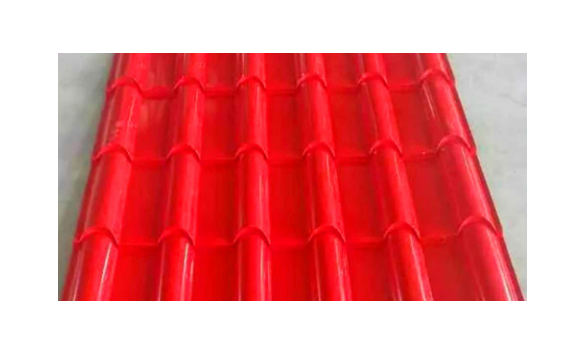Uvod
Izgradnja kuće možda je jedna od najvećih financijskih obveza koje ćete ikada preuzeti, a bez obzira na to živite li u kući od kontejnera ili u prosjeku, troškovi mogu biti vrlo različiti. U ovom detaljnom članku razmotrit ćemo sve financijske detalje oba različita pristupa, uključujući kratkoročne troškove, dugoročne troškove te utjecaj na okoliš.
Koliko materijala i radne snage će biti na početku vašeg posla?
Kontejneri su inovativni i kreativni način života za jeftino, jer su napravljeni od čelika, što je najjeftiniji materijal u usporedbi s drvetom ili ciglom, koji su naravno tradicionalni građevinski materijali koji mogu trajati mnogo godina. Jednostavno rečeno, ekonomija novih kontejnerskih materijala za kućanstvo samo su oko 30$/$60 po kvadratnoj stopi u usporedbi s domaćim proizvodima na osnovi približno 100$/kvadratnu stopu.
Na frontu troškova rada, pronalazite iste razlike. Mogu se sastaviti u kratkom vremenu uz minimalnu radnu snagu Modularna verzija kontejnerskih kuća, što dovodi do manjih plaća i brže izgradnje, što zauzvrat troši vrijeme i novac. S kontejnerima imate puno više fleksibilnosti u početku jer faza projektiranja i planiranja (gdje stvari koje nisu ništa postanu nešto) traje dulje nego kod tradicionalnog doma posebno zato što postoje dimenzije određene za svaki kontejner u skladu s tim što ostavlja malo prostora za manevrisanje.
U skladu s člankom 3. stavkom 1.
Kako se kontejnerske kuće smatraju jakim po prirodi, to je svoje mjesto u broju održavanja. U skladu s člankom 3. stavkom 2. točkom (a) Uredbe (EZ) br. 1907/2006 Komisija je odlučila o uvođenju mjera za utvrđivanje rizika od otpadnih plinova u Uniji. Kuće izgrađene od drveta zahtijevaju redovitije popravke i održavanje.
Energetska učinkovitost je također drugi čimbenik s dugoročnim implikacijama koje su mu inherentne. Kontejnersko stanovanje je trajno i možda neće imati energetsku učinkovitost konvencionalnog stana s dovoljnom izolacijom. Ali kontejnerske kuće mogu dugoročno vratiti te troškove postizanjem energetske učinkovitosti na istom nivou kao i njihove kolege izgrađene s štapom s malo izolacije i dizajna ovdje i tamo.
Kontejnerske kuće, iako su relativno nove, nisu svima tako prijatne pa bi vrijednost prodaje trebala biti zabrinjavajuća. Tradicionalna kuća koja ima sve prave konfiguracije daje cijeloj tržištu, a time i vrijednosti od prodaje, zajedničkiji profil.
Kako utječu na klimu: iskorištavanje resursa i proizvodnja otpada
U poređenju s drugim kućama, manje je otiska, kontejnerske kuće su ekološki prihvatljivije. Koriste dostupne resurse, trebaju manje za izgradnju tako da je održivi izbor. Uobičajena građevinarska proizvodnja, s druge strane, obično koristi veće količine otpada. pROIZVODI i izvorni materijali (ne reciklirani).
Lokacija i priprema mjesta
Od mjesta na kojem se gradi rad do količine priprema, sve to može utjecati na troškove. Kontejnerski stanovi također mogu biti bolji u postavljanju zahtijevajući manje pripreme lokacije za instalaciju i ne zahtijevajući savršeno tlo. Tradicionalne kuće imaju veći otisak i trebaju više pripreme mjesta kako bi se olakšala infrastruktura posebno na teško prolaznoj zemlji.
Prilagodba i fleksibilnost
Kontejnerske kuće također imaju ograničene površine i mogućnosti prilagođavanja u usporedbi s tradicionalnim kućama; međutim, nude jedinstvene mogućnosti rasporeda. Stvari kao što su ograničenja dizajna i promjene okvira za nosilac će biti ruka i noga. Osim toga, proizvedene kuće obično su izgrađene na stalnoj osnovi, zbog čega se mogu dizajnirati mnogo svestranje od tradicionalnih kuća i ako je potrebno, dodatni prostor može doći u korist ili čak nužno s vremenom.
Studije slučajeva i primjeri
Ništa ne demonstrira ovu cijenovnu razliku bolje od stvarnih primjera. Za kuću u kontejneru s tri spavaće sobe iz CATR-662019_07ContainerHome4 Texas Sažetak troškova Kapacitet Jedinka za profil Kapacitet $80.000 puna temelja kapaciteta $150.000 Ukupno (započinjanje uključeno) $68.200 troškovi izgradnje $60.000 završne radove Credit: Carina Johnson/ S naziva Nacionalne asocijacije građevinarstva Sadržaj koristen iz ovog infografikona prilagođen u oblik slike od strane Dereka Wilsona.) Uzeti na obzir Studija slučaja usporedila je cijene koje su bile par stotina tisuća više nego što biste dobili za tradicionalnu kuću tog veličine u tom području — oko $250.000. Ovo je koliko možete uštedjeti sa kućama u kontejneru.
Izazovi i razmatranja
Kontejnerske kuće ne mogu se financirati kao proizvedene i izgrađene kuće na mjestu. Kad je riječ o financiranju kuća u kontejnerima, neki zajmodavci možda oklijevaju da im pozajmljuju hipoteku. Kako su kontejnerske kuće u ovom trenutku neuobičajene, pitanja o čimbenici i osiguranju možda se ne uklapaju u kutije.
Zaključak
Stoga su troškovi izgradnje kuće od kontejnera niži od troškova tradicionalne kuće u smislu troškova izgradnje i troškova. Ali za to moramo uzeti u obzir troškove kao što su složeni dizajn, prilagođavanje i dugoročno održavanje i energetska učinkovitost su veliki faktori također; plus ekološki izgled kuća kontejnera igraju važnu ulogu. Kupci koji kupuju svoj imanje po prvi put moraju balansirati ove čimbenike i odlučiti koji će im im imovina i financije bolje služiti.

 EN
EN







































